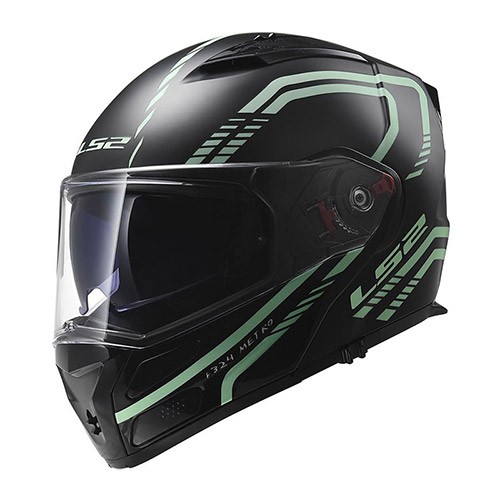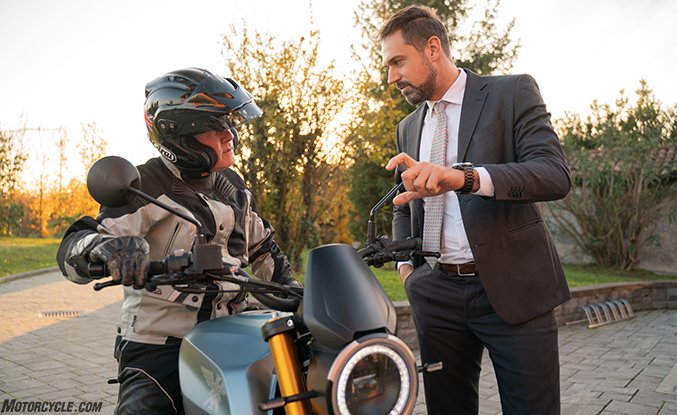
Just over four years ago, Italian trophy marque Moto Morini narrowly avoided joining the many other defunct brands from all our two-wheeled yesterdays already deposited in motorcycling history’s trash bin. But in October 2018 Chen Huaneng, the owner of Chinese scooter and minimoto manufacturer Zhongneng Vehicle Group, saved it from extinction by acquiring 100% ownership of Moto Morini from the previous Italian owner.
In my exclusive interview with him that month, Mr. Chen stated his intention to immediately develop a range of Moto Morini models with 650cc Parallel-Twin engines. These would financially underpin the high end 1,200cc V-Twins which the company had exclusively manufactured ever since its 2003 revival. He was as good as his word, and exactly three years later, the Moto Morini X-Cape 650 go-anywhere Adventure bike entered production at the Zhongneng factory in Taizhou, 400 km south of Shanghai, for sale all over the world. This has now been joined for 2023 by two Seiemmezzo models built on the same DOHC eight-valve 650cc Parallel-Twin platform sourced from rival manufacturer CFMoto, whose factory in China is only 25 km from Taizhou. One is an urban Scrambler, the other a Naked Roadster. All three models were entirely developed in Italy by Moto Morini, then productionised by Zhongneng in China.
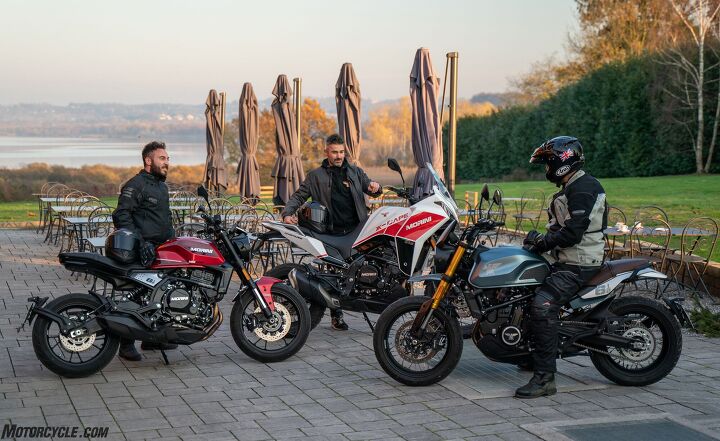
The man charged by Zhongneng with directing Moto Morini’s ride along the comeback trail is its General Manager Alberto Monni, a 12-year veteran of the Italian company. A Pavia University Economics graduate who worked for a spell in the nautical industry and in banking, Monni followed his passion for motorcycles in 2009 by joining Moto Morini as the Production Manager at its Trivolzio plant 30 km south of Milan, where since late 2018, he became responsible for supervising the transition from Italian to Chinese ownership. The chance to speak with him in Italy unveiled the company’s future road map along that trail.
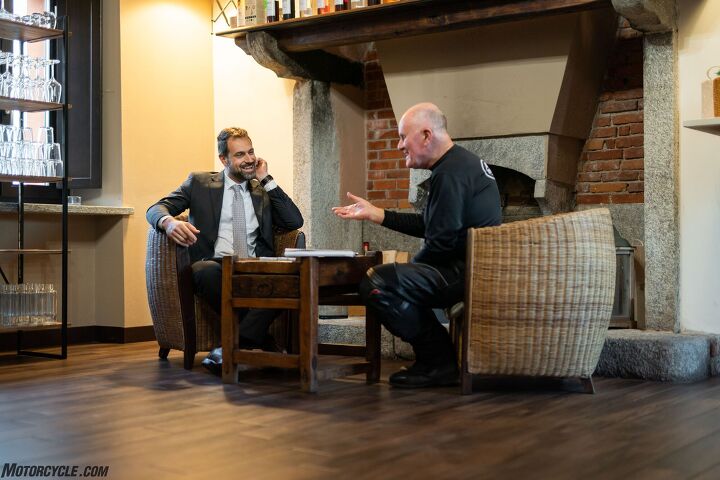
Alan Cathcart: Alberto, please bring me up to date on where Moto Morini is today.
Alberto Monni: As you know, Moto Morini production in recent years was around only 300 motorcycles each year, with different versions of the models using our Euro 4-compliant 1200cc CorsaCorta 87° V-Twin engine. But in 2022, after launching the X-Cape 650, we registered over 3,500 motorcycles in Europe alone in just 10 months, despite having to recreate the whole dealer network from zero, and needing to remind customers of the brand’s existence. So, it’s been a great success, with just a single model, albeit a very good one, but now, we have both versions of the Seiemmezzo in showrooms for 2023 and are targeting another big jump in sales.
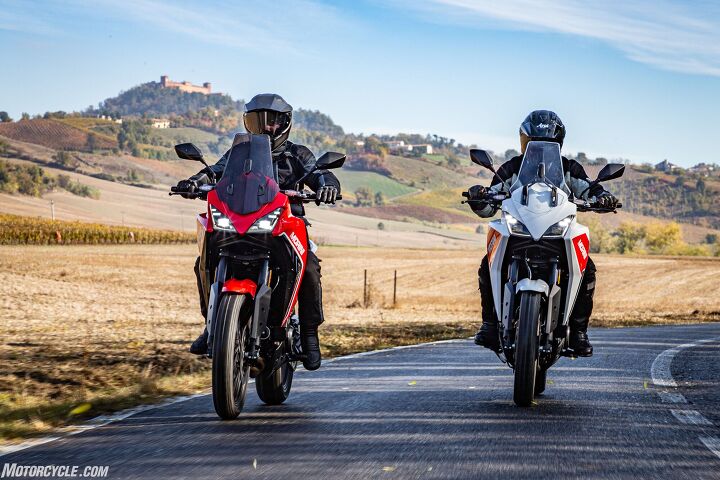
AC: Has China’s COVID clampdown affected production of the bikes? Have you suffered from any shortage of components?
AM: A little bit in terms of some parts like the ECU or ABS, but not as much as other brands, because we started placing component orders three years ago when we showed the bike in EICMA 2019. So, these problems are not so big for us, but the main issue is making shipments, because of the holdups at the port of Shanghai, which our products are shipped from. Costs have spiralled, too – a container from Shanghai to Genova that cost us 1,500 Euro in 2019 pre-Covid costs 12,000 Euro today. That’s a huge difference!
AC: Which countries are you selling Moto Morini in besides Italy?
AM: Most of the European countries – Spain, Portugal, Germany, France, UK, Ireland, Netherlands, Belgium, Luxemburg, Austria, Czech Republic, Greece, Croatia, and Switzerland, with the Nordic countries up next. Our owner Zhongneng has also been selling it in China, and India for sure is the main market for them after that, followed by Thailand and Malaysia.
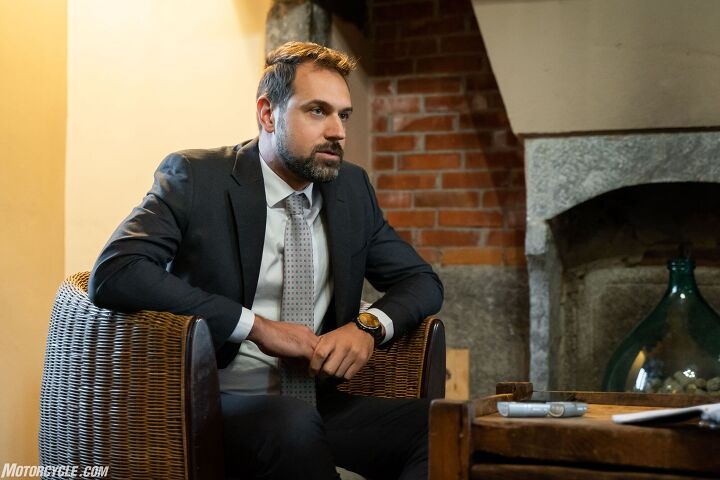
AC: But, not Australia?
AM: Moto Morini is already being sold in New Zealand, where the X-Cape has been received very well, and our partner in China told me at the EICMA Show last November that they are in discussion with potential importers in Australia, and intend to appoint one by April this year at the latest. We believe our future range of models will be very appealing to this important market.
AC: Do you plan to start selling Moto Morini in the USA?
AM: Yes. In October last year, we established our own company in California to handle distribution directly, and they are preparing the structure to get all our models approved for homologation, while building up the dealer network. Because California, specifically, and the USA, as a whole, is an important yet difficult market that’s also very dangerous commercially if you don’t do things correctly, we’re making sure that we take each step in the right order to avoid any problems arising. But we aim to have everything in place to start selling our 2024 model range there at the end of this year, with full customer backup.
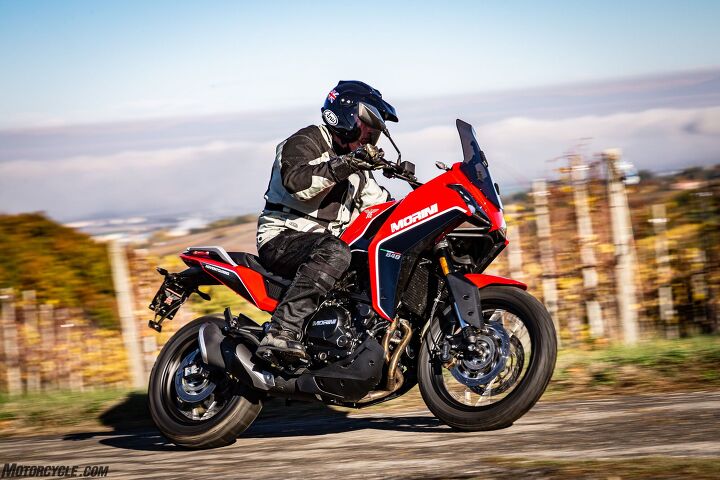
AC: What will that range consist of?
AM: For 2023 we now have three models in the 650cc entry level category, the two versions of the Seiemmezzo available in both Scrambler and Naked bike versions, and the X-Cape ADV model. Then for 2024 these will be joined by a new middleweight family of models to compete in the increasingly important 700-900cc category, in addition to a Euro 5+ version of our long-lived CorsaCorta 1200cc V-Twin engine with full electronic capability, including ride by wire, a choice of riding modes, traction control, etc. We have already been testing this new version on the road for more than one year, and it takes this really fantastic engine which has been the heart of the Moto Morini company for the last 20 years to the next level. So for sure, we will restart production of a range of models powered by it in 2024, which we will launch at the EICMA Show later this year. When Zhongneng Vehicle Group took over the Moto Morini company in 2018, they immediately committed to making this engine the basis of our future and have invested strongly in redeveloping it for Euro 5+ compliance, valid until 2026. But the most important thing is that, besides this bigger engine, they have also invested in developing a range of smaller capacity and medium displacement Moto Morini models, of which the X-Cape 650 was the first, now joined by the two Seiemmezzo models.
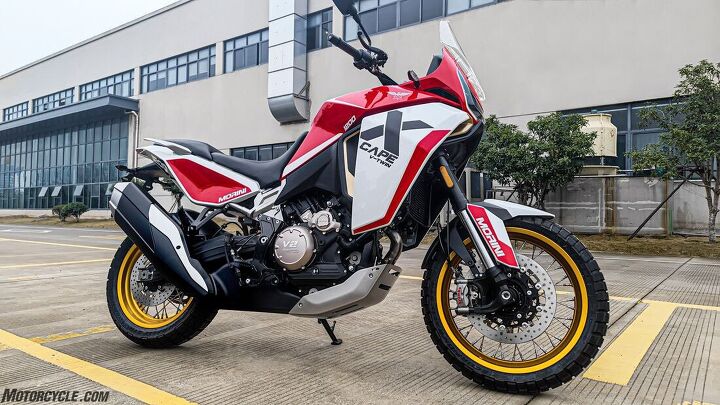
A prototype with the 1200cc V-Twin.
AC: Will Euro 5+ Morini V-Twins still use the same essential CorsaCorta motor, but with revamped electronics?
AM: Yes, the mechanical part of the motor is 95% similar to the old one. So,the exciting character of the engine will remain the same as before, but we intend it to be easier to ride for less expert riders. The Moto Morini Corsaro with the CorsaCorta engine was the very first sporting 1200cc V-Twin, before Ducati, Buell, etc., and for a long time, it led the ones which came afterwards, in terms of performance. But the previous owners did not keep up with electronic development of the platform, which we are now addressing.
AC: Was it always a problem with Moto Morini for the past 20 years ever since it was revived in 2003 that you had no entry level product to be able to fund the ongoing development of the larger capacity models?
AM: Yes, the difficulty was exactly that, and our bikes were expensive, too – so without a full range of models, it was really difficult to create a dealer network, with the result that the volume of sales was also affected by this problem. It was a true vicious circle. Now, we have resolved this issue with the 650cc models, and we will start selling the Euro 5+ version of the 1200 V-Twin at the end of this year to power a 2024 range of models. Our intention in future is to have at least three different models for each displacement in our range. The only segment we will not focus on is the Maxi Sportbike, because our aim is not to compete with KTM or Ducati in top end performance – it’s really not where we want to be. ADV is a must in Europe, so that’s the first bike that we will show in EICMA this year, using the Euro 5+ 1200 engine
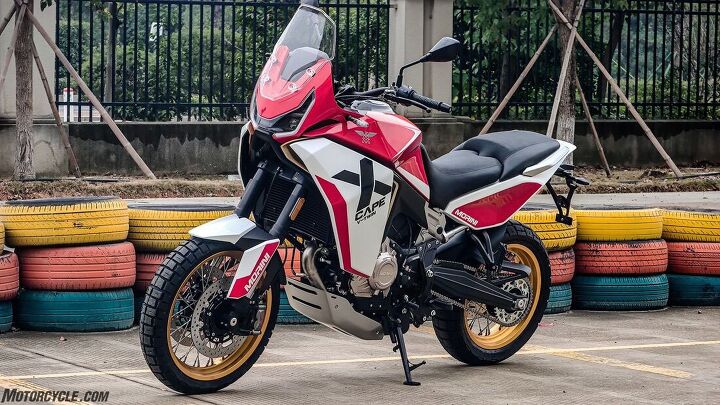
AC: If you start with an Adventure bike, what will the next two 1200cc models be alongside that?
AM: Moto Morini wants to compete in all key segments, and last year’s EICMA Show showed the Naked roadster is becoming popular once again. So, we are looking at also developing Custom and Naked models.
AC: What about the new middleweight engine family? When we spoke about this last year, you told me that it must be a V-Twin because this is Moto Morini’s soul. Is that still the case?
AM: Absolutely, yes. It’s different from the current parallel-twin platform that we are using on the Seiemmezzo and X-Cape, but that’s because after Zhongneng acquired Moto Morini, to relaunch the brand we had to use engines already available. But the heart of Moto Morini for all future models will be our own V-Twin engines, which benefits us also because it’s different to what our competitors are doing – the other brands are ceasing to invest in V-Twins and are switching to parallel-Twin motors. We believe that this feature can make us really stand out in the future, because the V-Twin engine is the format which appeals to the most passionate customers for motorcycles. We have a great history to be proud of going back to 1937, so we are one of the oldest brands in Europe, with a famous past and established traditions, which we want to build the brand’s future around.
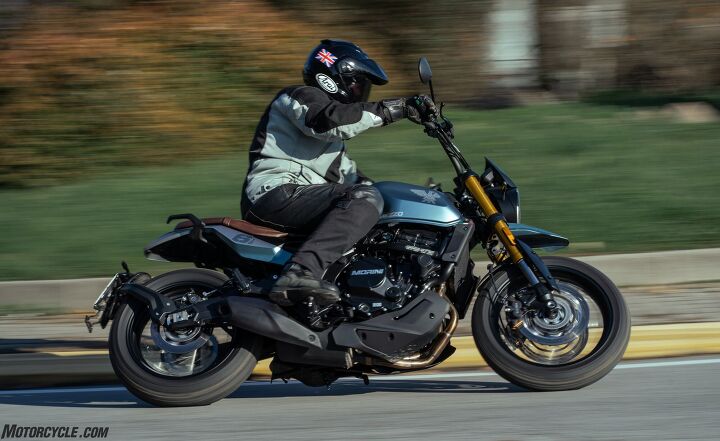
AC: What capacity will your new middleweight V-Twin be?
AM: It’s been designed as an 800cc platform, but we are deciding whether to increase it to 900cc, or reduce it to 700c – or maybe both, depending on the model. We have all three variants already running on the dyno, and we are about to start testing the first prototype vehicle on the road.
AC: Is it an 87° V-Twin like the CorsaCorta?
AM: No, it’s a 90° eight-valve engine, very compact with an advanced design.
[Shortly after this interview was conducted, it was revealed that Zhongneng filed vehicle identification number (VIN) information with the U.S. National Highway Traffic Safety Administration suggesting the new engine will be a 750 cc V-Twin claiming 97 hp. —Ed.]
AC: If it’s an advanced design that you’re going to enlarge above 800cc, will you make a 955cc version to compete against the Ducati Panigale V2 in the new Supersport class?
AM: (laughs) Yes, maybe that might be possible! We can take the capacity out to above 900cc with different cylinders and heads, but using the same strong crankcases. It’s a truly modular design which is very versatile. As I said earlier, Moto Morini will never be a Superbike manufacturer, but we believe that the market for what can be termed rational sportbikes is already growing back again. The new Supersport racing category with controlled performance to equalize different types of motorcycles in the 600-950cc category can be very appealing for our customers, because these are real world machines, whereas Superbikes have now become so expensive, with such high technology, and so fast, they’re no longer street bikes but can only be used safely at track days or in racing.
The Supersport category is a typical Moto Morini sporting class, where the customer can race the bike competitively. This is the reason why we wanted to invest in this new V-Twin engine. A lot of brands decided to stop producing V-Twins for what are maybe two reasons. One is the cost, which is higher than for a parallel-twin, and perhaps also because the Inline-Twin is more versatile as being easier to package to produce models in several different segments. But it’s obvious that the V-Twin is the most sporting engine format, and this is a Moto Morini tradition we will follow in future.
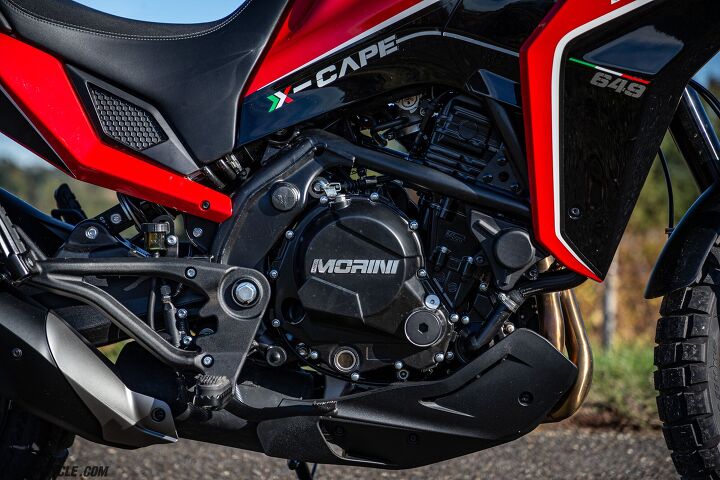
AC: Going further down the capacity scale, for the smaller engine models you are presently selling using the 650 CFMoto parallel-twin motor, will you produce your own engine for this category?
AM: We are considering this, but for the moment, it’s really early to decide for sure, because we relaunched the brand only one year ago with the excellent CFMoto engine and must give this time to run. But we’re looking at something different. In the past, Moto Morini became very famous for our popular 3½ V-Twin, over 85,000 of which were sold from 1973 onwards, so we are considering bringing back the 3½ today. Maybe it won’t be a best-selling model in Europe, but in many other countries around the world such as in Latin America, India, and Asia, a 350cc V-Twin made in China but designed by Moto Morini in Italy could be a very appealing and well-priced model. Royal Enfield has implicitly recognized this by launching the 350 Hunter. We believe that a Moto Morini 3½ could be very successful in this segment of the global marketplace.
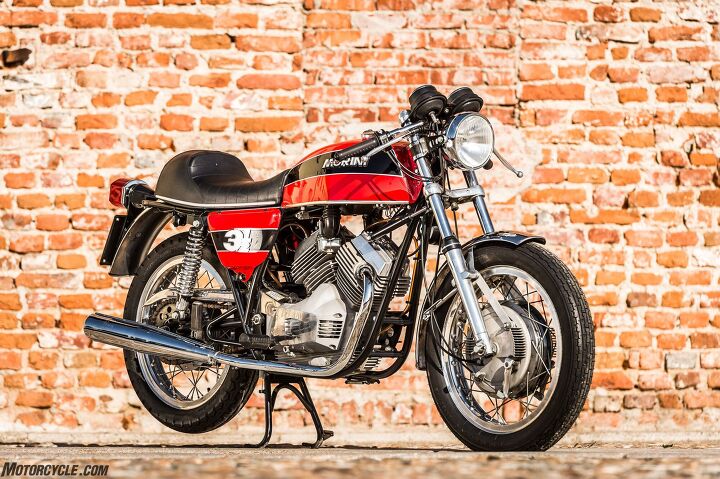
Moto Morini 3½
AC: Maybe with Heron heads like on the 3½, with the combustion chamber inside the piston?!
AM: Why not?! Seriously…
AC: Are you concerned that to create your 650cc models Moto Morini is using an engine from CFMoto, another Chinese company which potentially could be viewed as a competitor?
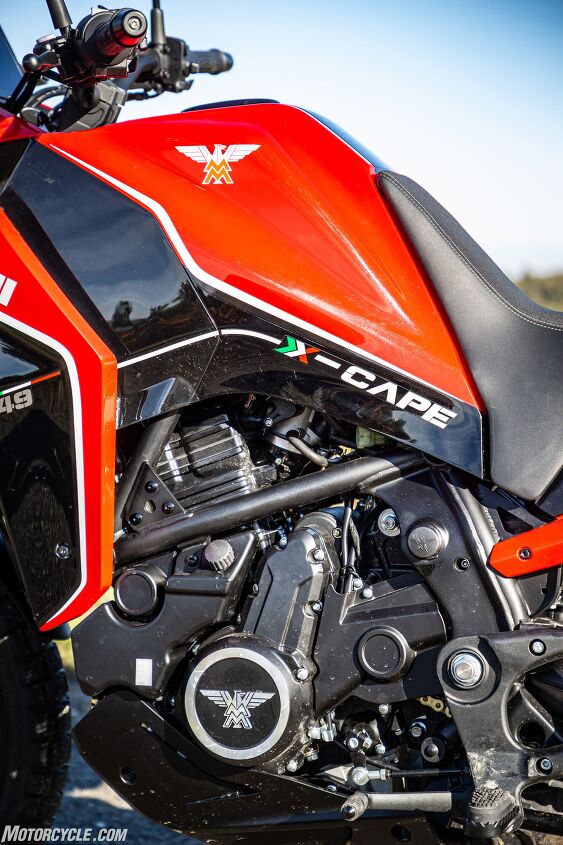 AM: The difference right now is that Moto Morini is a respected brand historically in a way that CFMoto is not yet, so while they are arriving in the Europe market with really good products. Moto Morini’s heritage is totally different. Plus, in the X-Cape, we have an entry-level Adventure model with genuine off-road capability that they do not yet offer. I’ll admit this was originally a possible concern when we first started out with this project, but now, I’m convinced that this is actually a plus, because as you know, tens of thousands of examples of this motor have already been sold in the past decade. So, it was the perfect engine for Moto Morini to enter into this displacement category with. But for sure, our future must not be linked to other companies, in terms of buying engines from them. This is the reason why we are already working on some totally new engine designs of different displacements, and we will be the manufacturers of these, allowing us to close all supply links with other companies. Because as you say, CFMoto is not only our supplier, but also our competitor.
AM: The difference right now is that Moto Morini is a respected brand historically in a way that CFMoto is not yet, so while they are arriving in the Europe market with really good products. Moto Morini’s heritage is totally different. Plus, in the X-Cape, we have an entry-level Adventure model with genuine off-road capability that they do not yet offer. I’ll admit this was originally a possible concern when we first started out with this project, but now, I’m convinced that this is actually a plus, because as you know, tens of thousands of examples of this motor have already been sold in the past decade. So, it was the perfect engine for Moto Morini to enter into this displacement category with. But for sure, our future must not be linked to other companies, in terms of buying engines from them. This is the reason why we are already working on some totally new engine designs of different displacements, and we will be the manufacturers of these, allowing us to close all supply links with other companies. Because as you say, CFMoto is not only our supplier, but also our competitor.
AC: Are you content with how Moto Morini is developing? What is your projection for 2023 in terms of sales in Europe of the three different versions of the 650?
AM: Our target is to sell 9,000 examples this year in Europe of the X-Cape and the two Seiemmezzo models, which will allow Moto Morini to open other new markets where the ADV is not the top class right now. I think this is a realistic target, because the first feedback we’ve received from Seiemmezzo customers is very good, maybe because the two models stand out from their competitors by having very versatile styling, so they can be a good choice for different customers, young and old.
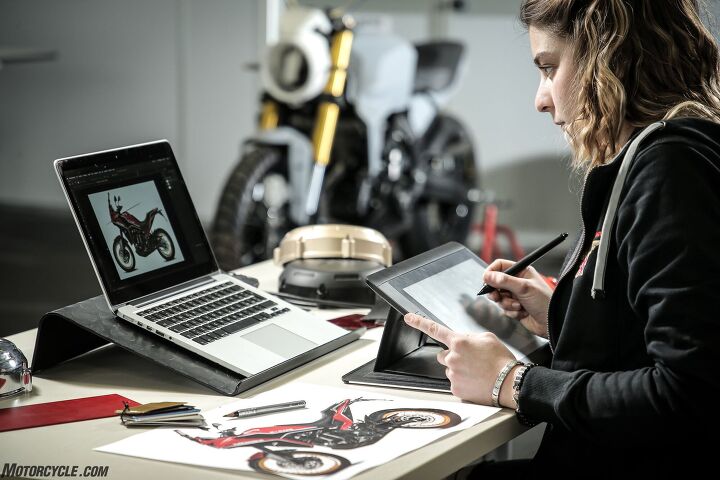
AC: Who is responsible for that styling?
AM: For both Seiemmezzos, it was entirely done inside the Moto Morini factory in Trivolzio, where we have created a fully-equipped studio with a young design team with fresh ideas, using traditional design methods blended with state-of-the-art digital techniques. So, they began with the pen by making sketches, passed to the clay model, then reverse engineered this which enabled us to assemble the first prototype to put on the road. When the bike was correct in terms of handling, styling, comfort and rideability, we passed the project to our Chinese colleagues, and they adapted it very faithfully to start mass production. It was a very quick process, which we will continue to follow in future for the several new models we have in the pipeline.
Installing the new design studio at the same time as ramping up shipments to over 600 bikes per month of each model required us to expand our factory from its existing 3,400m2 by purchasing the existing unit next door measuring 1,000m2. But for 2024 when we will dramatically increase our production to include all three platforms, we will surely expand still further.
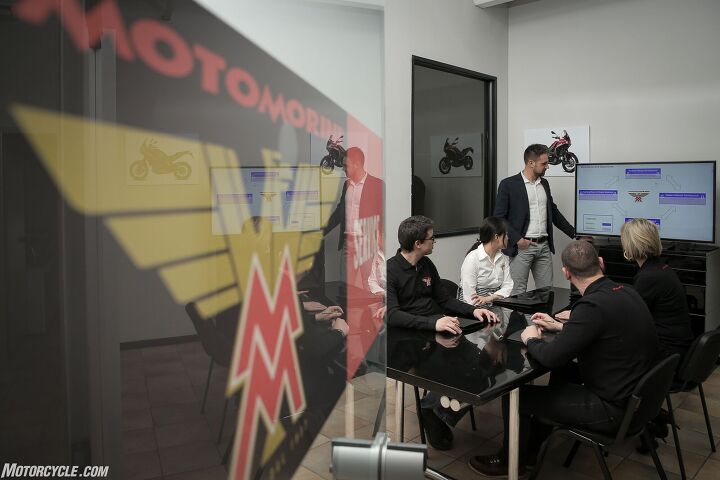
AC: How many employees does Moto Morini have now?
AM: Two years ago, we were 13 people working full time in Moto Morini here in Italy, plus five outside consultants. Today, we have 22 with six consultants, and by the end of this year we expect to number 30 people inside Moto Morini. But of course, we also have a large workforce in China working exclusively on developing and manufacturing Moto Morini products.
AC: So, will your future strategy be that each new model is designed and created in Moto Morini in Italy and then passed to China for engineering and production?
AM: Absolutely, yes. We started as we mean to go on because we want to create a strong brand identity – a family feeling, if you like – for each new model, and this simply isn’t possible if the bike is designed either by an outside consultant or by a different brand. So, in order to achieve this, we must keep the design development completely in house and maintain this and the dynamic development in Italy and, when we are satisfied with the result, pass all the information to China for them to manufacture it.
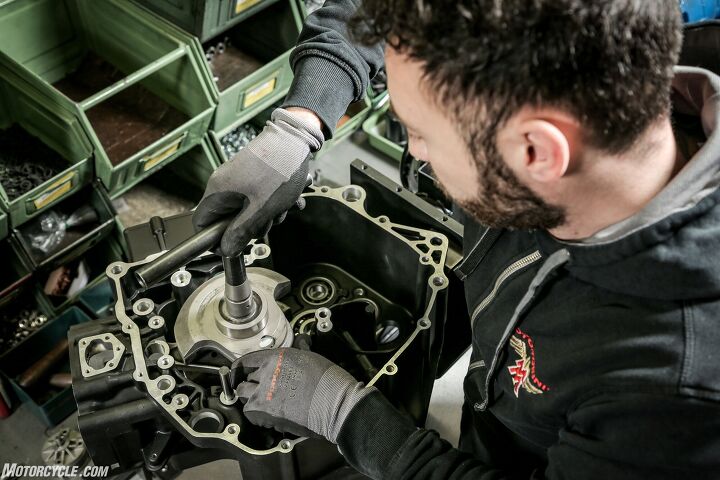
AC: While made in China, you’re still using European components on these entry level models, with Brembo brakes, Pirelli tires, a Bosch ECU, but this time on the Seiemmezzos unlike on the X-Cape, not Marzocchi suspension. Why?
AM: In developing the X-Cape we wanted to fit stronger large dimension 50mm forks, and in Asia right now, no supplier produces these.o, we decided to use an Italian brand and went with Marzocchi. With the Seiemmezzo, it was a different story because neither the Naked or the Scrambler is an off-road bike, so will be ridden on normal highways or hard dirt roads. We decided to lessen the dimension of the forks, to reduce weight, which gave us a bigger choice on the market. We were already using a Kayaba shock on the X-Cape, so we decided to move from Marzocchi to Kayaba, which also allowed us to arrive in the market with the right price, a crucial aspect of the Naked segment.
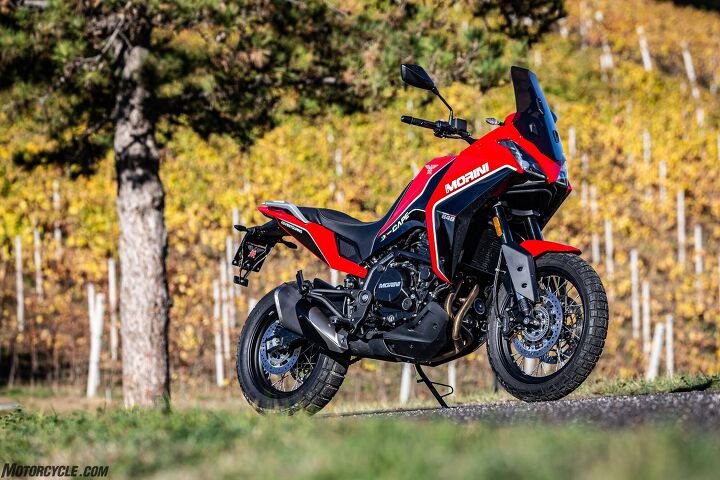
AC: Yes, since your products are made in China, this allows you to sell them at extremely affordable prices. Yet, it seems from the models I’ve ridden that the manufacturing quality is very high. Is this something that you insisted on, or is it something your Chinese owners brought anyway?
AM: Thank you, but I think that this is a new era of motorcycle production – and of cars, too – in that if you take one Chinese manufactured bike and put a bike made in Japan alongside it without any stickers, no customer will be able to recognise which is which. But I can honestly say that we insisted a lot, because we knew we only had one chance to convince the customer that, after being purchased by a Chinese company, Moto Morini would still retain all its brand values in entering the smaller capacity market with the right bike at the right time, at the right price, and above all with a good quality product. We knew we cannot allow any single one of these elements to be missing, and honestly, our Chinese partner did a great job, because on our machines the quality of the plastic, for example, is really fantastic. They’re a scooter manufacturer, after all, so we have nothing to teach them about plastic! But many favourable comments have been made about the build quality, which is very high, and all the other parts of the bike. So, the dynamics, the engine mapping, the choice of components from suppliers like Bosch and Brembo – all that’s been decided by us here in Italy with Zhongneng’s full approval. So far, it’s been a very happy partnership, which I believe has resulted in our jointly discovering the formula of delivering a high quality product at a very favourable price.
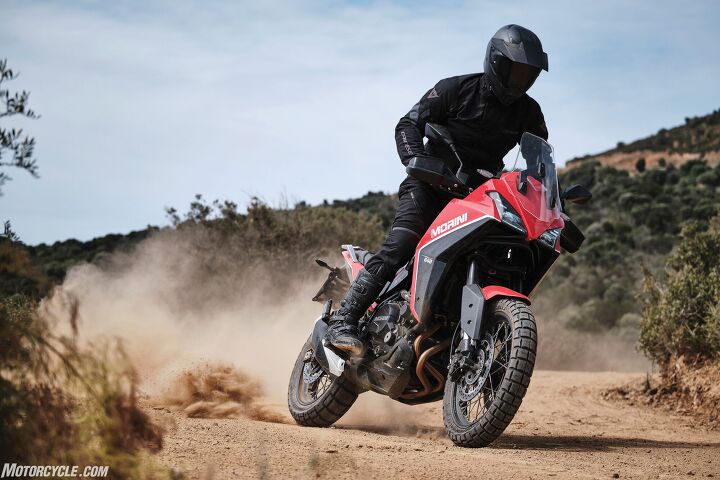
AC: So, Moto Morini is on the verge of a big expansion – where do you expect to be five years from now?
AM: I hope and believe that in the next five years Moto Morini will be a truly global brand, fully competitive in the marketplace with other such manufacturers, and with a full range of products. We started out well in 2022, and it seems the customer agrees with us because in the peak selling month of July the Moto Morini X-Cape was the second best-selling bike in Italy. So, number two after the Benelli TRK500, ahead of the BMW R1250GS in all bike sales over 250cc. It was impossible to forecast such a result just three years ago.I hope that within the next five years, we can repeat this achievement in other countries. We have very big plans for the future, as well as the funding to be able to bring them about, giving us the certainty that we can achieve them. Because as I know from my 12 years in the company in different roles, we have also had good ideas in the past, but the problem was the resources to make them happen weren’t there because of the low volume of production, and the higher prices for our products, which that dictated. Now, the structure that the arrival of Zhongneng Vehicle Group has created for Moto Morini gives us very many opportunities.
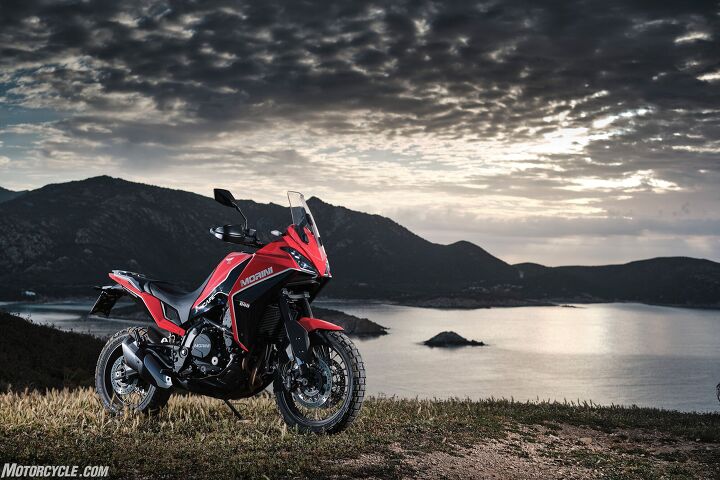
Moto Morini History: Best-Kept Secret
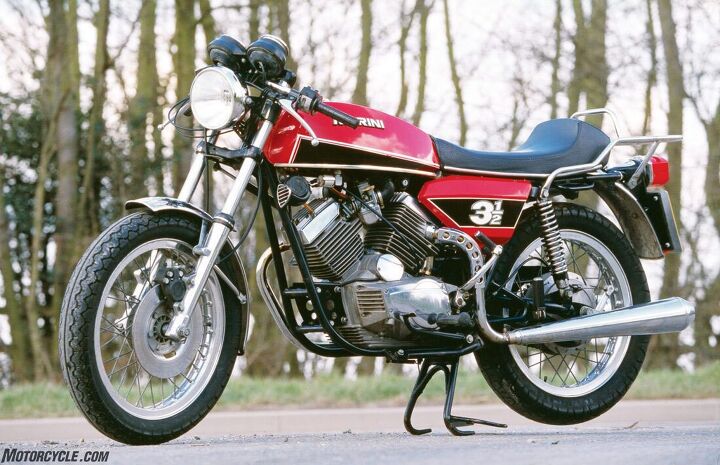
Founded in Bologna in 1937 by Alfonso Morini, Moto Morini was formerly a small but prestigious family concern whose sporting flair brought it widespread respect as an underdog capable of defeating much larger brands, leading to deserved commercial success. The most famous Moto Morini racer was the bike widely recognized as the world’s ultimate four-stroke racing single – the 12,000rpm 37bhp twin-cam 250cc Grand Prix contender on which in 1963 Morini’s solitary works rider Tarquinio Provini came so close to wresting the 250GP World title, finishing two points behind Jim Redman’s four-cylinder Honda. By then, Morini had established a loyal following for its 125/175cc sporting singles like the Rebello, Settebello, and Corsaro. Giacomo Agostini actually began his racing career on a Morini, attracting the attention of Count Agusta by winning the 1964 Italian 250cc title on one, before switching to the far wealthier MV team. By the time he passed away in 1969, Alfonso Morini could be well satisfied with a lifetime of two-wheeled achievement.
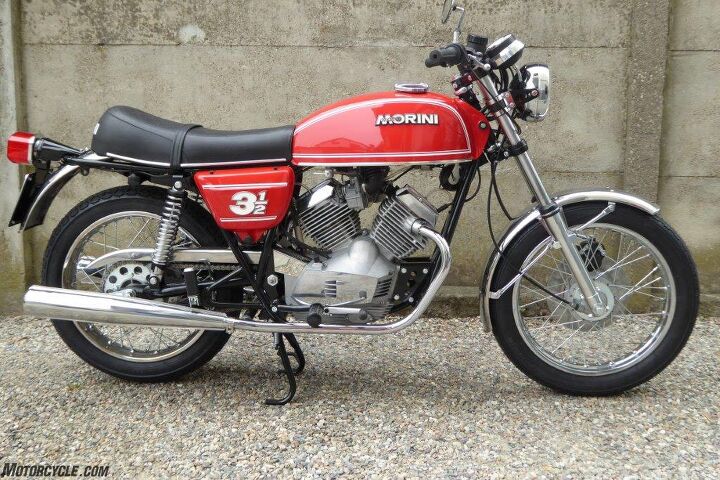
Moto Morini’s management was taken over after his death by Alfonso’s daughter Gabriella, who wisely diversified the company’s model line upwards in 1973, by introducing the family of bikes powered by the ultra-distinctive Heron-headed 72º V-Twin air-cooled hi-cam pushrod engine developed by the firm’s new chief engineer, former Ferrari designer Franco Lambertini. Debuting in 350cc form with the 3½ Strada, with later 500cc V-Twin and spinoff 250cc single-cylinder variants, more than 85,000 of these unique, groundbreaking motorcycles were built over the next two decades, gaining Moto Morini a loyal following around the world. This was the first volume production streetbike from any manufacturer to be fitted with electronic ignition, toothed belt camshaft drive, a dry clutch and a six-speed gearbox. The Canguro trailbike which followed later caught the same dual-purpose off-road wave as Honda’s Africa Twin, and surfed the company to secure showroom success. But, although profitable, Morini’s small production volume of around 10,000 bikes a year wasn’t capable of generating enough capital for the rising costs of developing a new range of bikes, and after an abortive attempt in 1981 to produce an 84bhp Turbo version of the 500cc V-Twin, Gabriella Morini sold the company to the Castiglioni brothers’ burgeoning Cagiva empire in 1987.
The Castiglionis couldn’t resist the chance to acquire such a historic marque, especially when it came with such a fine piece of real estate attached to it as the Moto Morini factory located in the midst of what was by then a prime Bologna residential suburb, just a couple of kilometres from the Ducati plant they already owned. They commissioned design guru Massimo Tamburini to produce a modern sportbike addition to the V-Twin Morini range, which duly arrived in 1988 as the full-enclosure Dart, closely modelled on the same designer’s Ducati 750 Paso and Cagiva Freccia 125. But while Morini’s Excalibur custom models continued to sell well, the Dart’s pushrod air-cooled engine was too archaic to appeal to the sportbike customer, and although Lambertini already had its successor up and running on the dyno in the form of a liquid-cooled fuel-injected 720cc otto valvole 67° V-Twin of advanced design, the rival Ducati faction in the Cagiva empire headed by Massimo Bordi ensured all the Castiglionis’ development cash was directed towards its own 851cc desmoquattro V-Twin design. Starved of funds, the new Morini V-Twin motor died a death, Lambertini joined Piaggio to design scooters, the Morini factory was knocked down and redeveloped (netting a tidy profit for Cagiva, helping refuel Ducati’s revival), and Moto Morini production petered out in 1992.
American investment firm TPG’s acquisition of Ducati from Cagiva at the end of 1996 brought Morini with it, leaving them to find a buyer for a marque they’d ended up owning by default. In 1999 a sale was concluded to Morini Franco Motor/MFM, founded in 1957 in the Bologna suburb of Casalecchio by Alfonso Morini’s nephew, Franco. Producing over 100,000 engines a year, mainly for scooters, MFM also manufactured Benelli’s range of three-cylinder motors, as well as the Bimota 500cc Vdue two-stroke engine. In 2003 a joint venture to relaunch the Moto Morini marque was formed between MFM and the three locally-based Berti brothers, keen motorcyclists as well as successful industrialists. The Bertis took 50% of the new company, with MFM boss Maurizio Morini bringing the Moto Morini brand to the table. The marque’s former chief engineer, Franco Lambertini, had already joined MFM from Piaggio in 1997, and quickly developed the all-new 1,187cc 87° V-Twin CorsaCorta engine powering the Corsaro 1200, the reborn marque’s first model. The Corsaro and its later 9½, Granpasso and Scrambler sister models established a well-earned reputation for muscular performance and mechanical reliability, which saw the Corsaro win successive Naked Bike magazine shootouts against its two- and three-cylinder competition. Indeed, the Moto Morini CorsaCorta motor was the first of the new generation 1200cc V-Twin engines, setting a trend later followed by Ducati, Buell, KTM and Aprilia which was subsequently recognised on the World Superbike stage.
Having re-established the Moto Morini marque with a sound product and solid corporate structure, the Berti brothers accepted Maurizio Morini’s offer to cash in their share of the business in January 2007, transferring their half of the JV partnership to him, and exiting the motorcycle industry. Moto Morini was now back in the hands of the family which founded it – just in time for its future existence to be threatened by the imminent world economic debacle. The company went into voluntary liquidation in September 2009, and was sold by the liquidator in 2011 to two Milan-based entrepreneurs, investor Ruggeromassimo Jannuzzelli and banker Sandro Capotosti. Production restarted in April 2012 in a new, much smaller 3,400m2 factory south of Milan, with the debut of a new model, the Rebello 1200 Giubileo, to celebrate Moto Morini’s 75th birthday.
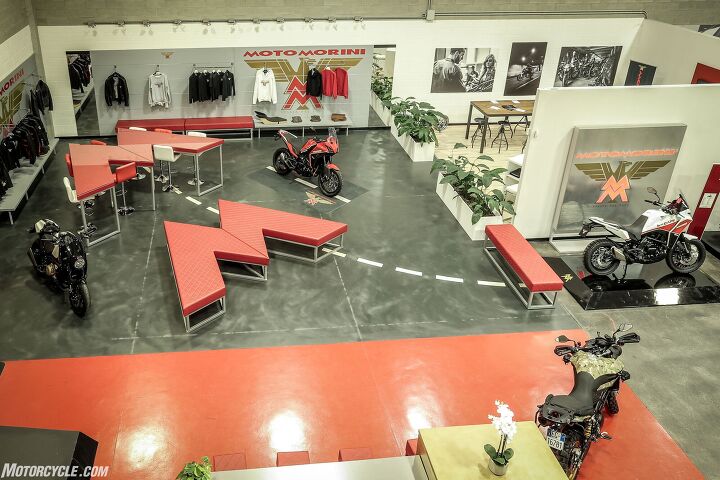
Up to its temporary closure in 2010, Moto Morini had manufactured 4,000 bikes during its five years of existence after being relaunched at the end of 2004, with a maximum of 1,600 bikes produced in any one year – albeit with a high level of customer satisfaction. In 2016 Jannuzzelli took 100% control of the company, and continued to invest in new models while addressing the single biggest hurdle to Moto Morini’s future success: making potential customers aware of what many considered to be the best-kept secret in those days’ motorcycling marketplace. In October 2018 he passed on the task of addressing that to Mr. Chen Huaneng, owner of China’s Zhongneng company, a maker of scooters and small capacity motorcycles. The X-Cape was the first new Moto Morini model to be developed under Zhongneng ownership, and has now been followed by its Seiemmezzo twin sisters – but with much more soon to follow.
Become a Motorcycle.com insider. Get the latest motorcycle news first by subscribing to our newsletter here.
